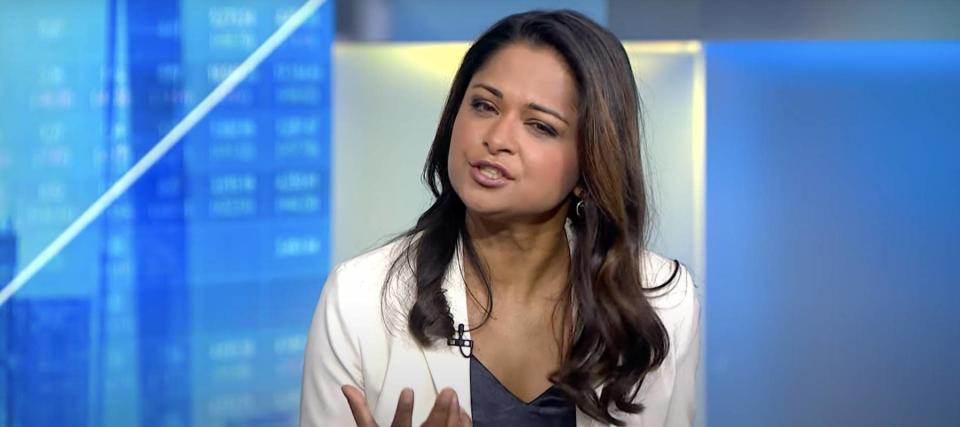Bank of America predicts an S&P 500 slump in 2022 — but it still believes in these 3 sectors

If you’re still bullish on the U.S. stock market, you may not want to hear what Bank of America has to say.
The second-largest bank in the U.S. has a forecast of 4,600 for the S&P 500 by the end of 2022. With the benchmark currently hovering around 4,790, that means the bank is pointing to negative returns for the coming year.
“The probability of a 10% correction in the near term or over the next 12 months is elevated,” the bank’s U.S. stock and quantitative strategy chief Savita Subramanian told Bloomberg earlier this month.
At the same time, the Wall Street firm also highlighted three sectors that could outperform in the new year. And if those don’t appeal, the bank’s investment chief has pointed to one unorthodox asset that could outperform over the next decade.
Energy

Let’s start with energy stocks, which have already done well in 2021. That shouldn’t come as a surprise, with inflation soaring and oil prices making a strong comeback.
“Energy and financials offer inflation-protected yield,” Bank of America writes in a note to investors.
Looking at the big names, we see Chevron shares are up 38% year to date, Exxon Mobil returned 48%, while ConocoPhillips enjoyed a stellar 81% rally. To put things in perspective, the S&P 500 returned just under 28% during the same period.
In Q3, all three companies delivered substantial year-over-year growth in both revenue and earnings.
These supermajors also provide oversized dividends compared to the rest of the market: ConocoPhillips pays 2.6%, Chevron offers 4.6%, while Exxon Mobil is yielding a juicy 5.8% at the current share price.
Of course, it’s risky to go deep on a sector as volatile as energy. If you prefer a more stable approach, you can always build a diversified fixed-income portfolio just by using your spare change.
Financials

While many market participants fear rising interest rates, plenty of financial stocks — especially banks — look forward to them.
Banks lend money out at higher rates than they borrow at, pocketing the difference. As interest rates increase, the spread earned by banks widens.
The sector is enjoying strong earnings growth this year. Quite a few banks also raised their dividends in 2021, which is great for investors who want to earn a passive income.
For instance, Goldman Sachs boosted its quarterly payout by 60% to $2 per share. Morgan Stanley doubled its quarterly dividend to 70 cents per share. Meanwhile, Bank of America itself has increased its quarterly rate by 17% to 21 cents per share.
Those three banks are all up at least 40% year to date — and that means they are not cheap. For instance, Goldman Sachs currently trades at $385 per share.
That said, you can always get a smaller piece of the bank using a popular app that allows you to buy fractions of shares with as much money as you are willing to spend.
Health care

You don’t need to look very far to find names worth considering in the sector — Bank of America has “buy” ratings on several health care companies.
“Healthcare offers growth/yield at a reasonable price,” the bank writes.
Earlier this month, the bank raised its price target on health insurer Centene from $85 to $93. Considering that the stock trades at $85.28 today, the new price target suggests a potential upside of 9.4%.
Days later, Bank of America raised its price target on pharmaceutical giant Eli Lilly to $300. That’s 9.2% above where the stock is at right now.
Eli Lilly announced a 15% increase to its quarterly dividend to 98 cents per share earlier this month, giving the stock a forward annual yield of 1.4%.
If you don’t want to pick individual winners and losers, there are also ETFs — such as the Health Care Select Sector SPDR Fund — that provide investors easy access to the sector.
A “finer” way to outperform the S&P 500?

Remember, even stocks in different sectors can move in lockstep with each other in times of volatility. During a market-wide downturn, everything can get sold off.
If you want to invest in something with big potential that also has little correlation with the ups and downs of the stock market, you might want to consider an overlooked asset: fine art.
Contemporary artwork has outperformed the S&P 500 by a commanding 174% over the past 25 years, according to the Citi Global Art Market chart.
And it’s becoming a popular way to diversify because it’s a real physical asset with little correlation to the stock market. On a scale of -1 to +1, with 0 representing no link at all, Citi found the correlation between contemporary art and the S&P 500 was just 0.12.
Earlier this year, Bank of America investment chief Michael Hartnett singled out artwork as a sharp way to outperform over the next decade — largely due to the asset’s track record as an inflation hedge.
Investing in art by the likes of Banksy and Andy Warhol used to be an option only for the ultrarich. But with a new investing platform, you can invest in iconic artworks, too, just like Jeff Bezos and Bill Gates do.
This article provides information only and should not be construed as advice. It is provided without warranty of any kind.




